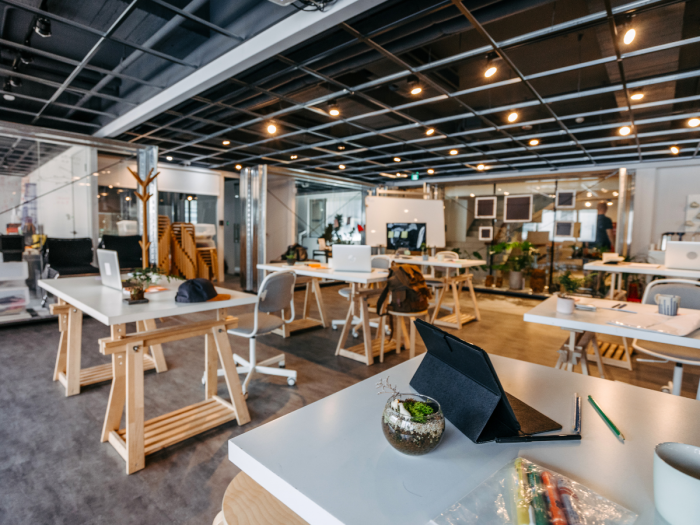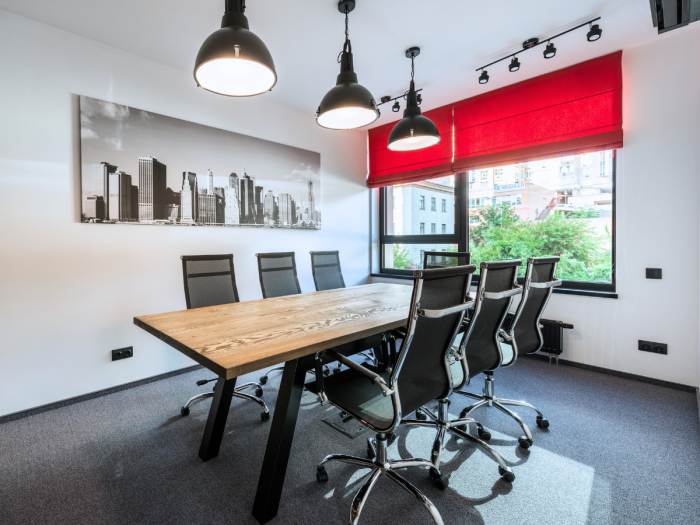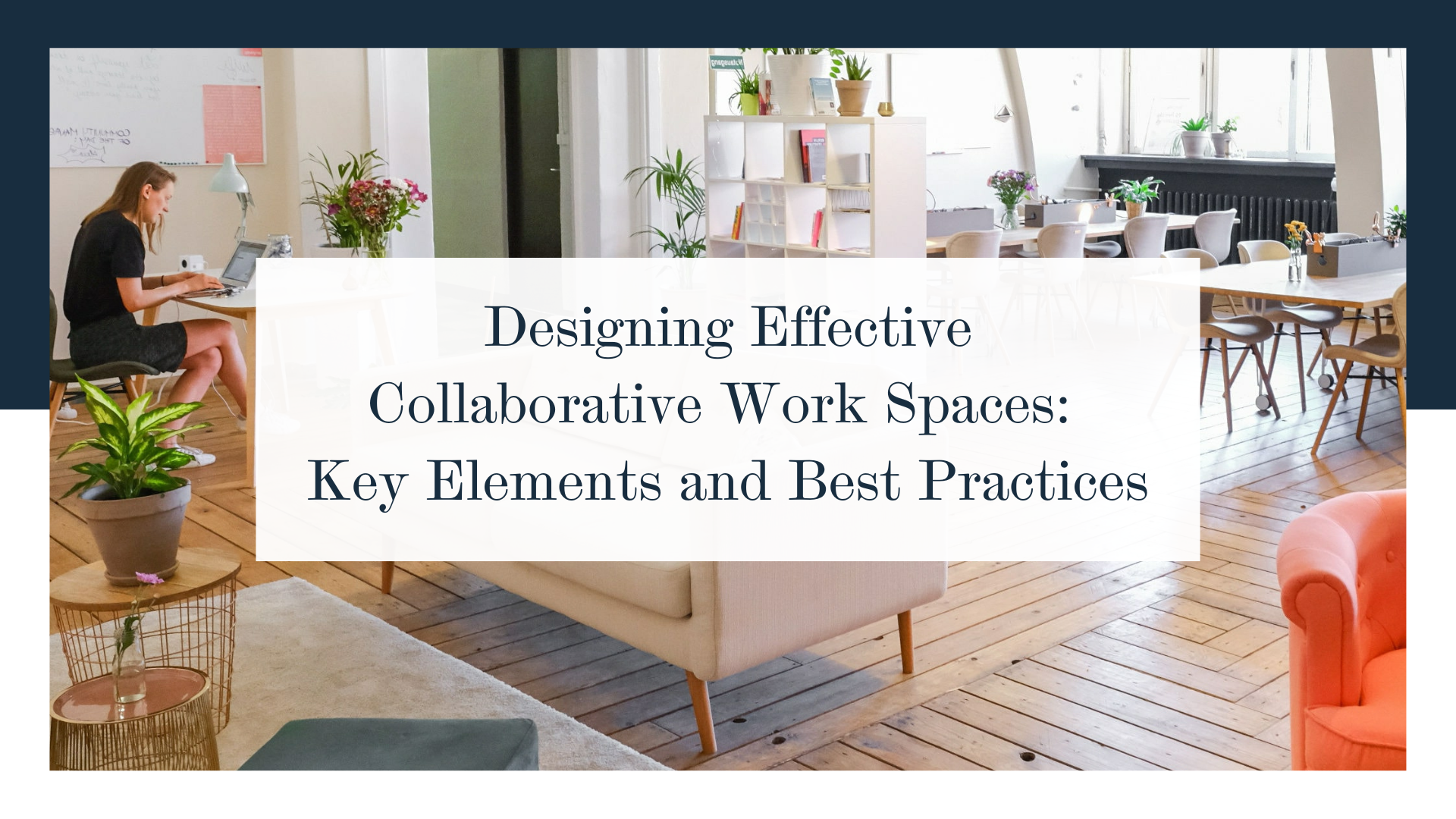Have you ever wondered why some workspaces seem to buzz with creativity and productivity while others feel dull and uninspiring?
Well, the secret lies in the design of collaborative workspaces.
In this blog post, we’ll dive into the exciting world of designing effective collaborative workspaces.
We’ll explore the key elements that make these spaces thrive. Plus, share some best practices to create an environment where collaboration flourishes.
We’ll also touch upon the fascinating topic of modern collaborative space architecture and why collaboration space names matter.
Let’s jump right in!
Understanding Collaborative Work Spaces
Picture this: a vibrant space where ideas flow freely, teams collaborate seamlessly, and innovation is the order of the day.
That’s the power of a well-designed collaborative workspace. Especially if you consider yourself a digital nomad. These spaces go beyond the traditional cubicles and encourage teamwork, communication, and creativity.
By creating an open and interactive environment, collaborative workspaces boost productivity, enhance problem-solving skills, and improve employee satisfaction.
Key Elements of Effective Collaborative Work Spaces
Flexible Layout and Furniture:

When it comes to collaborative workspaces, flexibility is key. Imagine being able to rearrange furniture and adapt the layout based on the task at hand.
From configurable seating arrangements to versatile furniture options like movable desks and modular seating, flexibility enables teams to customize the space to suit their needs.
Technology Integration: In today’s digital era, technology plays a vital role in collaboration. A genuinely effective collaborative workspace is equipped with audiovisual equipment for seamless presentations and video conferencing.
Moreover, the integration of collaboration tools and software, such as digital whiteboards and project management platforms, makes communication and document sharing a breeze.
Accessible Resources and Tools:
To foster collaboration, it’s essential to provide readily available resources and tools within the workspace. Whiteboards and flip charts allow teams to brainstorm and visualize ideas together. Project management tools help track progress and ensure everyone stays on the same page.
Adequate Space and Privacy:
Collaborative workspaces strike a delicate balance between open areas for collaboration and private zones for focused work or confidential discussions.
Managing noise control and ensuring proper acoustics is crucial to minimize distractions and create a conducive environment for both collaboration and concentration.
Inspirational Aesthetics:
Let’s be honest, aesthetics matter! A visually appealing and inspiring workspace can boost creativity and motivation. Think of colorful walls, artwork that sparks your imagination, and comfortable seating areas that invite collaboration.
Natural lighting and the inclusion of plants can create a refreshing ambience, promoting a sense of well-being among team members.
Modern Collaborative Spaces Architecture

Collaborative workspaces have evolved across various settings, each with its own unique architecture and design features.
In office buildings, collaborative spaces are strategically located near teams or departments that require frequent collaboration. These spaces often feature open layouts, shared workstations, and common areas designed for impromptu meetings and discussions.
Co-working spaces have gained popularity as shared environments that foster collaboration and networking. These spaces offer a mix of private offices, shared desks, and communal areas where individuals and organizations can collaborate and connect.
Educational institutions recognize the importance of collaborative learning and have tailored their physical spaces accordingly.
Collaborative learning spaces encourage students to work together, share ideas, and engage in group projects. These spaces often incorporate movable furniture, interactive displays, and technology tools to facilitate collaboration.
Innovation hubs, whether within organizations or independent entities, aim to cultivate creativity and innovation. These spaces typically feature open layouts, dedicated brainstorming areas, and zones for prototyping and experimentation.
Naming Collaborative Spaces
Now, let’s talk about collaboration space names. Have you ever walked into a workspace with intriguing names for its collaborative areas? Thoughtfully chosen names can add personality and enhance the overall experience. Effective names should reflect the purpose and culture of the space while igniting the imagination of its users. Consider incorporating the organization’s mission, industry-specific terminology, or words that evoke a sense of collaboration and creativity.
Best Practices for Designing Collaborative Work Spaces

Creating a successful coworking space requires following some best practices:
Conduct a needs assessment and research
To design a space that truly caters to the needs of your teams, start by understanding what they require. Conduct surveys, interviews, and observations to gather valuable insights.
Involve end-users in the design process
Collaboration works best when everyone feels ownership and involvement. Engage the future users of the space, seek their input, and involve them in decision-making.
This participatory approach fosters a sense of belonging and increases the chances of successful adoption.
Promote inclusivity and diversity
Collaboration thrives when everyone feels welcome. Design spaces that are accessible and inclusive for individuals with diverse backgrounds and abilities.
Consider ergonomic furniture, adjustable workstations, and facilities that cater to different needs.
Implement feedback and continuous improvement
Collaboration is an ongoing journey. Regularly collect feedback from users and make iterative improvements based on their suggestions. This ensures that the collaborative workspace evolves and stays aligned with the changing needs of its users.
Consider sustainability and environmental impact
Designing with sustainability in mind is not only good for the planet but also for the well-being of your teams. Incorporate energy-efficient lighting, recycling stations, and eco-friendly materials to reduce the environmental impact.
Wrapping Up
So there you have it!
Designing collaborative workspaces is like creating a secret recipe for success. By sprinkling in the right ingredients, you can create a space where the magic happens.
Remember, it’s all about flexibility, technology, accessibility, privacy, and aesthetics. These elements come together to form the perfect collaborative work environment.
Whether you’re in an office building, a cool co-working space, a school, or an innovation hub, the architecture of your collaborative space can make a big difference.
Think about how the layout, furniture, and atmosphere can encourage collaboration and spark ideas.
And don’t forget the power of a catchy collaboration space name – something that captures the spirit of your space and gets everyone excited.
To make sure your collaborative workspace is a hit, follow some best practices. Listen to the needs of your team and involve them in the design process. After all, they’re the ones who will be using the space every day.
Embrace diversity and inclusivity, because collaboration is all about different perspectives coming together. And always be open to feedback and improvement. Collaboration is a journey, and there’s always room to grow and make things even better.
Oh, and let’s not forget about sustainability!
By making eco-friendly choices, like energy-efficient lighting and recycling stations, you’re not only helping the planet but also creating a healthier workspace for everyone.
So go ahead, put on your creative hat, and start designing an amazing collaborative workspace.
With the right elements and best practices in place, you’ll create a space where collaboration thrives, ideas flourish, and success is just around the corner.
Get ready to unleash the power of collaboration and watch your teams soar to new heights!
